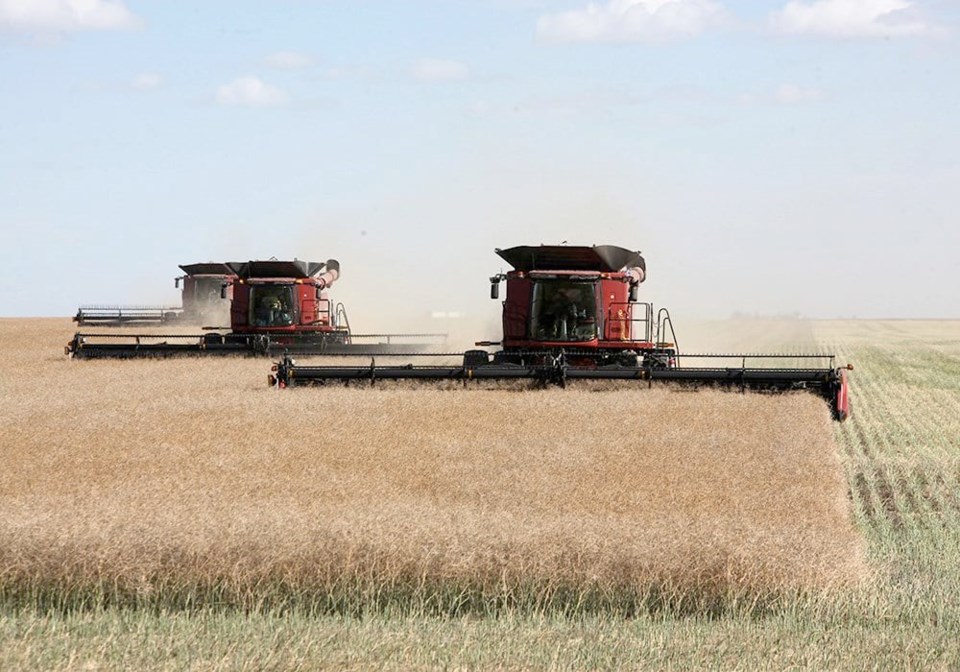SASKATOON — Canola growers in southern Saskatchewan want to know how much money is lost due to the low moisture content of their crops.
Mark Alexander, a grower from Weyburn, Sask., recently asked the Saskatchewan Canola Development Commission (SaskCanola) to conduct a study on the issue, which has become a thorn in the side of many growers. He has been straight-cutting canola since 2014 and the moisture levels in his crop are typically around five to six percent at harvest, which is well below the Canadian Grain Commission’s specifications of 10 percent.
“When you go straight from the combine to the elevator, you’re losing approximately one to three metric tonnes of weight value per load,” he said during the question-and-answer session at SaskCanola’s annual general meeting.
Grain commission rules prevent growers from adding water back into the crop, so the low moisture content results in lost revenue.
Codie Nagy, a SaskCanola director from Ogema, Sask., said in an interview following the meeting that it is a “big problem” for growers in the southern part of the province, where it tends to be hot and dry in August and September.
Growers in his area harvest a lot of canola with four to five percent moisture content. Straight-cut canola tends to be drier because it is standing in the field longer, but it occurs with swathed canola as well.
He said it is easy to quantify the loss. A super-B truck holds about 45 tonnes of canola. A five-percentage point reduction in moisture content would amount to 2.25 tonnes of lost weight.
With nearby canola futures at about $620 per tonne, that’s a financial hit of $1,395 per truckload.
CGC commissioner LonnyMcKague applauded Alexander for raising the issue.
“I fully support your organization looking at it and instigating that discussion,” he said during the SaskCanola meeting.
However, he cautioned that the commission’s rules are there for a reason.
“Water is not always just water,” said McKague.
“There is bacteria, depending on where you source your water to add to that product.”
Nagy said he understands the problem because the water in the seed is pure rainwater, which can’t be said for dugout or slough water.
“I don’t necessarily know if there is a solution,” he said.
“It’s definitely a hard problem. It might just essentially be tough luck.”
Another issue that surfaced during the question-and-answer session was the lack of transparency from seed companies regarding their disease resistance genes.
Former SaskCanola board member Wayne Truman thanked the organization for its disease testing services, which determined that his fields are loaded with blackleg disease.




